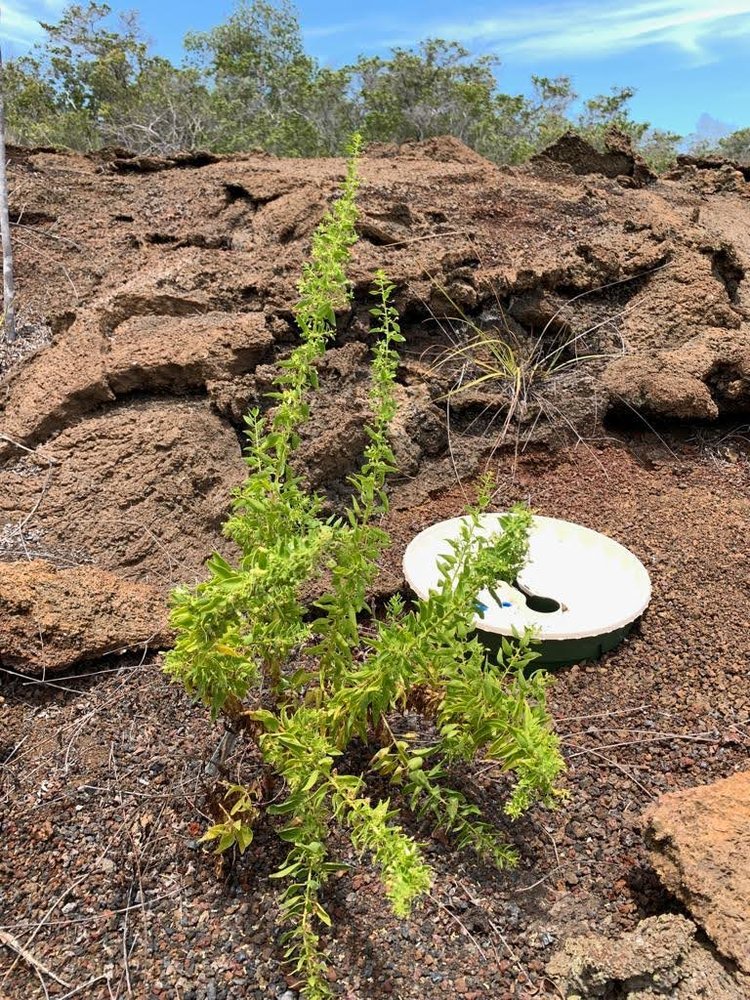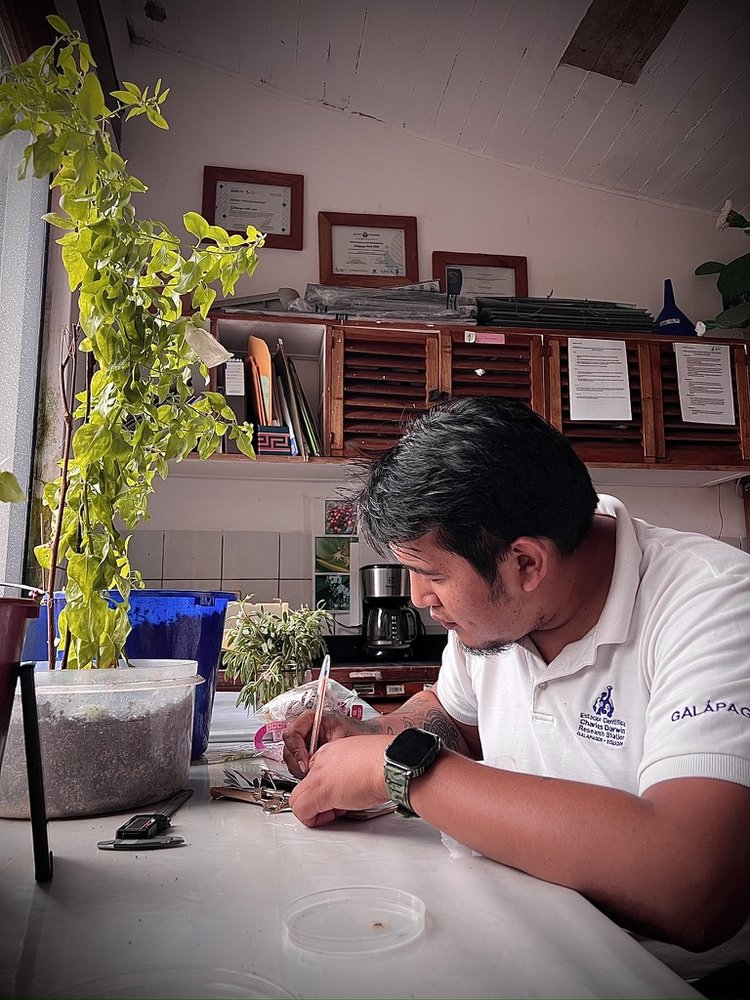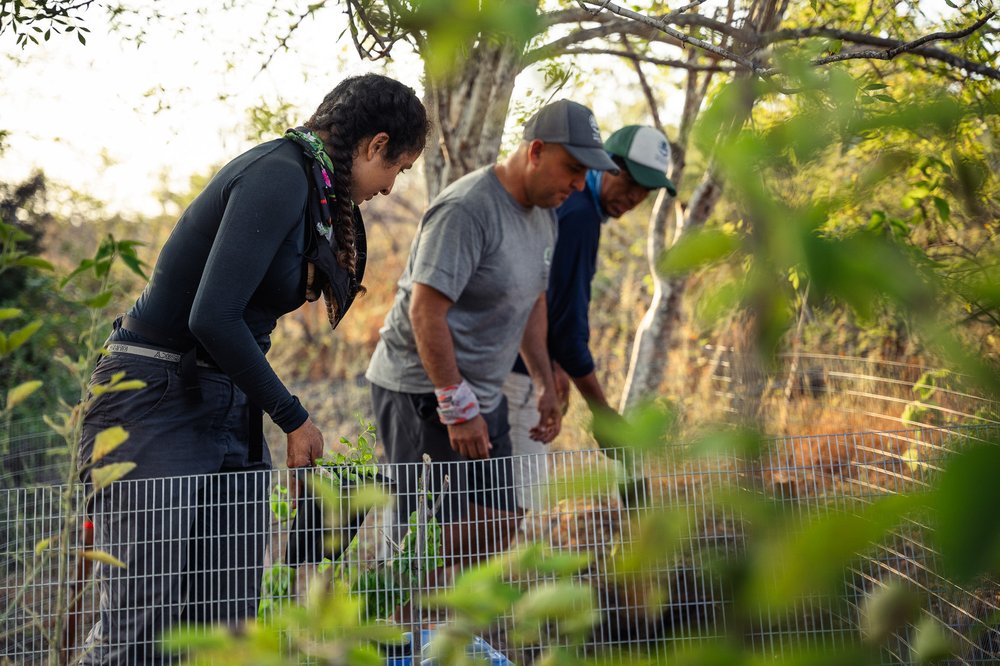I arrived as a plant ecologist at GV2050 almost 2 years ago and always knew it would be interesting to work on the restoration and conservation of Galápagos flora. After a lengthy interview and selection process, I understood that the field trips would be arduous and involve a lot of logistical work. But I underestimated it. A few months ago, I had my first outing to see the Galvezia leucantha subsp. leucantha that GV2050 has been conserving since 2018 at Playa Tortuga Negra, in northern Isabela. To give a bit of context, it is a small population of an extremely threatened shrub, growing in the middle of nowhere on volcanic rock soil. There, GV2050 has conducted several expeditions to protect the species. When I say small population, I mean a tiny population of 4 individuals that now numbers 19 plants! Reaching this population is no easy task, as it requires about 6 to 8 hours of navigation, often in boats going against the current (and sometimes without sanitary facilities!). Upon arrival, you have to walk on sand, carrying 20-liter jerrycans (locally called "chimbuzos"). The first time I went, I witnessed the fragility of the population. At that time, it was being attacked by a large number of pests that we controlled and collected for identification in the laboratory. That first instance allowed me to understand that when we talk about endangered plants that GV2050 protects, we are really dealing with extremely scarce remnants.


During 2023, we received national and international volunteers who began germination experiments with Galvezia leucantha. The seeds, so small they look like dust, presented significant challenges in their viability and germination, requiring analysis under a stereoscope. One experiment involved 1800 seeds from previous expeditions, of which only 20 germinated in three months, demonstrating the difficulty of propagating this species.
A few months later, more seeds continued to germinate week by week, but without any apparent pattern or treatment, indicating that much remains to be studied. Fortunately, our team includes Paúl Mayorga, who, as a technical and field assistant, along with volunteer Celine Charette, took care of each of these plants, transferring them to pots and nurturing them. An important update here: after 8 months of propagation, how many plants were we talking about? The count was encouraging. Remember that in Playa Tortuga Negra, there were only 19 plants, and now we had over 60 in the GV2050 offices!

Over the course of this year, Patricia Jaramillo Díaz (Senior Researcher at GV2050) dusted off old data from other experiments conducted with Galvezia to analyse all the information generated from 2016 to the present and thus generate a scientific publication. Along with this, a difficult decision had to be made: how many plants would return to their place of origin and how many would remain in the laboratory to evaluate their phenology? Phenology, which is the change in the timing of their reproductive phases (such as producing flowers or fruits), will allow us to learn more about the species to better conserve it.
I will take a moment to mention that biogeography is a branch of biology that fascinates ecologists. It studies the distribution of organisms across space and time. This aside is to highlight that thanks to the historical collections of the FCD herbarium, the decision we made was to take the vast majority of plants to a historic site in Northern Isabela, Caleta Tagus, from where the oldest record of Galvezia on the island exists and which has not been found again in 60 years! Nearby is the Galápagos National Park station in Canal Bolivar, so we chose this area to establish a new second population. We are talking about the return of a locally extinct species near Caleta Tagus!
In May of this year, with the help of park rangers who controlled rats and cats in the area, we planted 54 plants near the PNG station, plus 6 extra plants at Playa Tortuga Negra. This joint effort between the FCD with its GV2050 Program, Galapagos Conservancy (GC), and the Galápagos National Park Directorate (DPNG), accompanied by a unique landscape and countless Galápagos hawks, allowed us to quadruple the number of Galvezia leucantha in Northern Isabela! This achievement revives part of the species' historic habitat and establishes a legacy for its future conservation. Collaboration and commitment to ecological restoration remain crucial for protecting the unique biodiversity of the Galápagos Islands.


If you wish to contribute to our program and help conserve threatened species like Galvezia and others, you can support us through this link.







